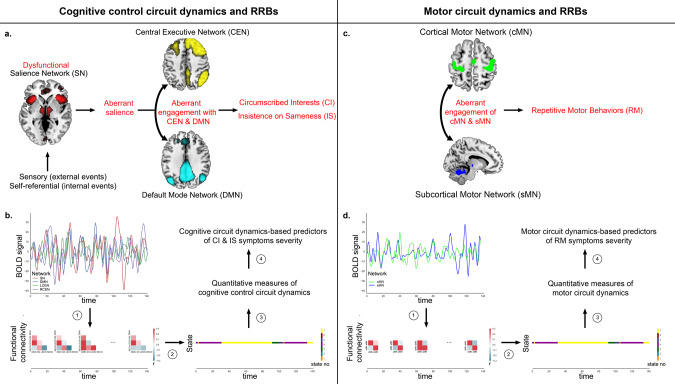Fig. 1. Overall approach to determine the temporal dynamics of cognitive control and motor circuits and its relationship with Restricted and Repetitive Behaviors (RRBs).
a Cognitive control circuit-based model of circumscribed interests (CI) and insistence on sameness (IS) symptoms. The model proposes that aberrant functional of organization of key fronto-parietal-opercular cognitive control circuit may contribute to the cognitive components of RRBs i.e., CI and IS symptoms in children with ASD. Specifically, this model posits a key role for the salience network (SN) in aberrant mapping of internal and external salient events leading to altered dynamic temporal interactions with the central executive network (CEN), and the default mode network (DMN), resulting in CI and IS. b Overall analysis pipeline for examining dynamic time-varying cross-network interactions within cognitive control circuit and their relationship with CI and IS symptoms. Time-varying cross-network interaction was measured using a dynamic functional connectivity approach. (1) We estimated dynamic functional interactions between SN, CEN, and DMN using a sliding-window approach. (2) To identify distinct group-specific states associated with dynamic functional connectivity, we applied a group-wise k-means clustering on the time-series of correlation matrices in each group separately. (3) Brain state-specific network interaction index (NII) was used to characterize cross-network interaction in each dynamic brain state. NII for each state k by averaging NII across sliding-windows labeled as state k. Cognitive NII (CNII) of a sliding window was computed as the difference in correlation between SN and CEN time series and correlation between SN and DMN. The correlation values were extracted from the covariance matrix associated with that sliding window. Mean and variability of time-varying CNII was calculated as average and standard deviation of CNII values across dynamics brain states respectively. (4) Linear regression analysis was used to examine the relation between dynamic time-varying cross-network interactions measure, including mean and variability of time-varying NII, and ADI-R derived RRB subtype symptom severity scores. c Motor circuit-based model of repetitive motor behavior (RM) symptoms. The model proposes that aberrant functional of organization of key cortical-subcortical motor circuit may contribute to the motoric components of RRBs i.e., RM symptoms in children with ASD. Specifically, this model posits a key role for altered dynamic temporal interactions between the cortical motor network (cMN), and the subcortical motor network (sMN), resulting in RM. d Overall analysis pipeline for examining dynamic time-varying cross-network interactions within motor circuit and their relationship with RM symptoms.

